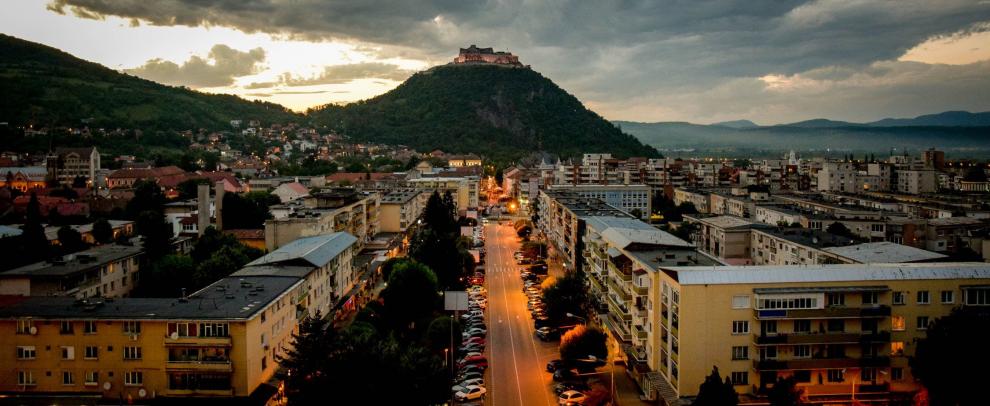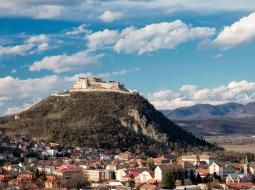Thessaloniki gets ready for its metro launch in November
The underground rapid transit lines have been under construction for almost two decades due to various project delays
 TheMayor.EU logo
TheMayor.EU logo 
Deva is one of the oldest settlements in Romania. The first historical attestation dates back to 1269, but the archaeological finds made on the territory of Deva show that the area was inhabited since the polished Stone Age.
The city of Deva is situated on the left bank of the river Mureș, at the foot of the Apuseni Mountains and Poiana Ruscă. The name Deva supposedly derives from the Dacian locality Decidava, from which Dava (fortress) derives. It was also attempted to associate the name Deva with the legendary Diva, Decebal's beautiful sister, as well as some Sanskrit and Sumerian words, and recent research suggests a link to the name Dowina.
Voivodship residence since 1307 and the center of a Wallachian military district since the 14th century, Deva has undergone important economic development during the reign of Iancu de Hunedoara and throughout the Middle Age period. Since the core of the medieval city has developed at the foot of the Fortress Hill, most of the landmarks are concentrated in the old part of the city.
Later, between the sixteenth and eighteenth centuries, Deva was further fortified, becoming one of the most powerful strongholds in Transylvania. Deva had a defensive role during the Ottoman incursions of the 15th and 16th centuries, and after 1607 it was owned by the Transylvanian princes. In 1686 it was occupied by the Austrians, and in 1784 it was unsuccessfully assaulted by the rebellious peasants and the miners of the Apuseni Mountains during the rebellion led by Horea, Cloșca and Crişan. In 1848 the citadel was the seat of the imperial troops who intervened against the Hungarian Revolution and in August 1849 it was destroyed as a result of the explosion of the ammunition depot.
A few days after the Fortress of Deva was destroyed, the revolutionary troops in Deva were defeated, and the same fate befell the whole Revolution in Transylvania.
During the 1848 Revolution, Deva was proclaimed a town with an elected council, with autonomy in leadership. The absolutist regime from 1848 to 1860 introduced but named mayors, the locality being put under the prefect's power. This form remained unchanged under the liberal regime from 1860 to 1866. Since 1886 Deva has become a town with an elected council.
The year 1854 marked the introduction of the telegraph in the city and the first civilian hospital, and in 1868 the entrance to the train station of the first train.
In 1886 a new building for the City Hall was constructed. After 15 years, in 1901, the City Hall was demolished, and the same building was built on the same place. The end of the 19th century and the beginning of the 20th century marked the development of capitalism in the area, a new stage of prosperity, Deva becoming the residence of many capitalists who invested funds in the areas of Hunedoara, Călan and the Apuseni Mountains.
As time passed, the city developed and became an important administrative center, one of the main tourist attractions of Hunedoara County, and also a cultural and economic center.
Deva is the capital of Hunedoara County, a city with a population of 69,924 inhabitants. Situated at a distance of 396 km from Bucharest, 441 km from Budapest and 677 km from Vienna, the city has an area of 59 km²; urban land is 1,754 ha.
Composition of the City Council: Mayor, two deputy-mayors and 19 councillors.
The city has a varied economy, the most developed segments are trade - (27%), scientific and technical professional activities - (13%), construction - (10%), transport and warehousing - (10%), manufacturing - (8%) and tourism. With an active support from the municipality, the city faces now a growth of interest for its economic potential, leading to new investments and creation of jobs.

The Fortress of Deva is considered to be among the most vital medieval fortifications in the entirety of Transylvania. The reinforced walls with square or circular towers and monumental gates are preserved and restored. From the main entrance gate, the lower wall of the enclosure rises to the hill and surrounds the fortress. The road that accompanies the wall leads to the second gate in the form of a long vaulted corridor. To the right of this door is kept the traces of the guard's chambers. Passing the second gate to the building complex on the hilltop, the trail goes up to the gate of the second fortress.
The wall of the enclosure has crenels, being arranged for heavy firearms. After a semicircular bastion, it reaches the gate of the last enclosure that keeps massive buttresses. In this enclosure the inner courtyard of the fortress develops, which is bordered by the tall walls representing the ruins of some rooms, household dependencies and warehouses.
In the center there are the ruins of the noble palace with gothic remains and Renaissance elements. To the west of the gate there is a defense tower, and to the east the guard room.
The Fortress of Deva in its present form is still evocative, attracting the interest of the visitors both through its ruins and by its position that dominates the city. Access to the Deva Fortress can be done both on foot, starting from the city park (Cetății Park) and by the cable car that leaves the square at the foot of the fortress.
Address: Unirii Square №4, 330152 Deva